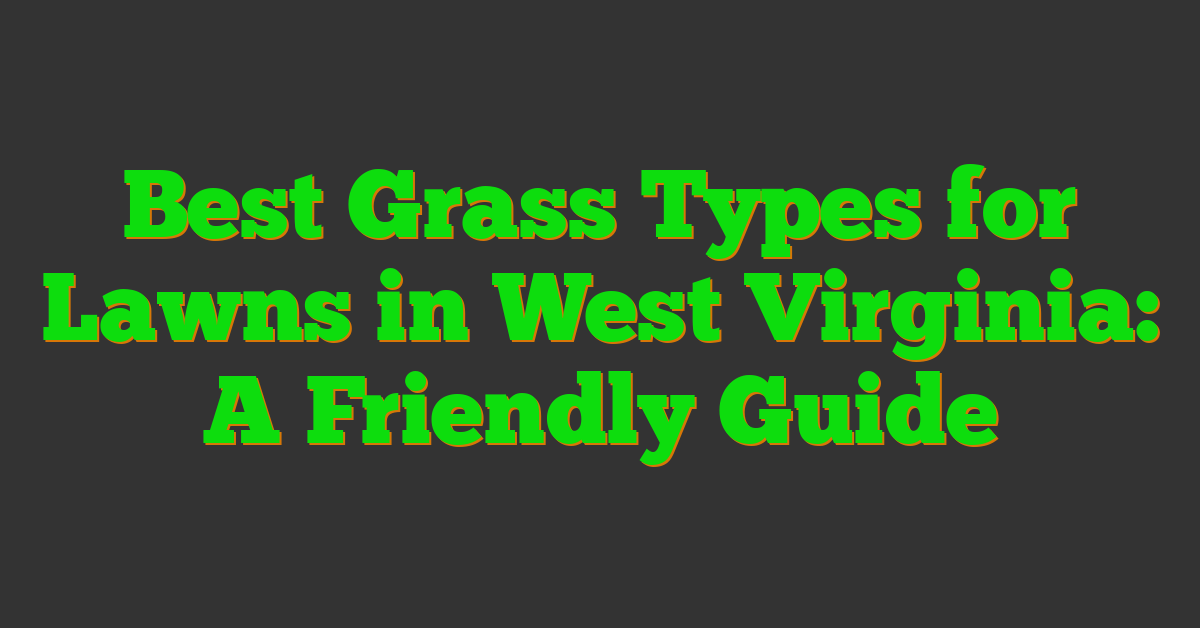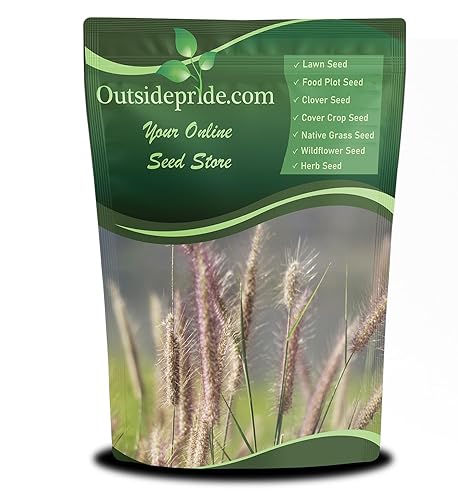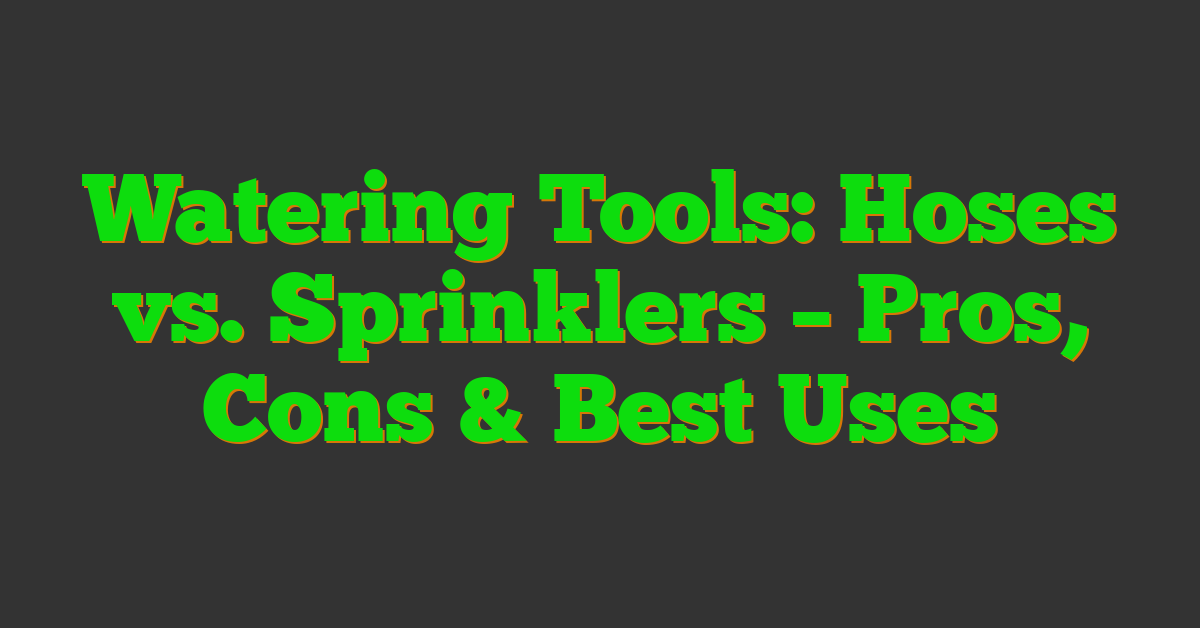If you’re a homeowner in West Virginia, you know that maintaining a lush, green lawn can be a challenge. With the state’s varying climate and soil types, it’s important to choose the right grass type for your lawn. Understanding the basics of lawn grasses and the importance of soil type and pH can help you make an informed decision.

Cool-season grasses are the best choice for lawns in West Virginia. These grasses thrive in the state’s cooler temperatures and can withstand the harsh winters. Popular cool-season grass types include Kentucky bluegrass, perennial ryegrass, and fine fescues. Warm-season grasses, on the other hand, struggle in West Virginia’s climate and are not recommended for lawns in the state.
Choosing the right grass type for your lawn is just the first step. Understanding the maintenance needs of your chosen grass type, dealing with pests and diseases, and adapting to changing seasons are also important factors in maintaining a beautiful lawn in West Virginia. With the right grass type and proper maintenance, you can enjoy a lush, green lawn all year round.
Key Takeaways
- Choosing the right grass type is crucial for maintaining a beautiful lawn in West Virginia.
- Cool-season grasses are the best choice for lawns in the state.
- Proper maintenance, including understanding the grass type’s needs and dealing with pests and diseases, is essential for a healthy lawn.
Understanding West Virginia’s Climate

https://www.youtube.com/watch?v=U12JPX-2Wjo&embed=true
When it comes to choosing the best grass for your lawn in West Virginia, it’s important to understand the state’s climate. West Virginia has a humid subtropical climate in the southern part of the state and a humid continental climate in the northern part. This means that the state experiences hot summers and cold winters.
In the summer, temperatures can reach up to 90°F, while in the winter, temperatures can drop to as low as 20°F. This wide temperature range can make it challenging to find a grass type that can thrive in West Virginia’s climate.
Additionally, West Virginia is located in what is known as the “transition zone” for grasses. This means that the state is located between the cool-season grasses of the north and the warm-season grasses of the south. As a result, it can be difficult to find grasses that can thrive in this area.
However, there are some grasses that do well in West Virginia’s climate. For example, fine fescue is a cool-season grass that is tolerant to shade, drought, and heavy traffic. Kentucky bluegrass is another cool-season grass that can do well in West Virginia.
If you’re looking for a warm-season grass, Bermuda grass and zoysia grass are good options, but they may not be suitable for the entire state. It’s important to consider where you live in West Virginia and the specific conditions of your lawn when choosing a grass type.
Overall, understanding West Virginia’s climate is crucial when choosing the best grass for your lawn. By selecting a grass type that is well-suited to the state’s hot summers, cold winters, and transition zone, you can ensure that your lawn looks its best all year round.
Basics of Lawn Grasses
https://www.youtube.com/watch?v=F4Lc_7d3Z2Q&embed=true
When it comes to choosing the best grass type for your lawn in West Virginia, it’s important to understand the basics of lawn grasses. Lawn grasses can be broadly classified into two categories: cool-season grass and warm-season grass.
Cool-season grasses are best suited for the climate in West Virginia. They grow actively in the spring and fall when temperatures are cool and moisture is abundant. Cool-season grasses include Kentucky bluegrass, tall fescue, and fine fescue. These grasses are known for their ability to withstand cold temperatures and tolerate shade.
Warm-season grasses, on the other hand, are best suited for hot and humid climates. They grow actively in the summer when temperatures are high and moisture is scarce. Warm-season grasses include Bermuda grass, zoysia grass, and St. Augustine grass. These grasses are known for their ability to withstand heat and drought.
When it comes to choosing the right grass species and variety for your lawn, it’s important to consider factors such as soil type, sun exposure, and foot traffic. Some grass species are better suited for sandy soils, while others thrive in clay soils. Some grass varieties are more tolerant of shade, while others require full sun. And some grasses can handle heavy foot traffic, while others are more delicate.
In general, turfgrass breeders have developed many different grass varieties that are well-suited for specific growing conditions. Some grasses are bred for their disease resistance, while others are bred for their drought tolerance. When choosing a grass variety, it’s important to consider your specific lawn care needs and goals.
Overall, choosing the right grass type and variety for your lawn can make a big difference in its appearance and health. By understanding the basics of lawn grasses and considering factors such as soil type, sun exposure, and foot traffic, you can make an informed decision that will help you achieve a lush, green lawn.
Importance of Soil Type and PH
https://www.youtube.com/watch?v=cENqhWsCuk8&embed=true
When it comes to growing grass, the soil type and pH are crucial factors to consider. The soil type affects how well the grass roots can penetrate the ground and access nutrients, while the pH level determines the acidity or alkalinity of the soil, which can impact the grass’s ability to grow and thrive.
West Virginia’s soil is typically acidic, with a pH range of 4.5 to 6.5. This means that the soil is low in nutrients such as calcium and magnesium, which are essential for healthy grass growth. To ensure that your grass receives the necessary nutrients, it’s essential to prepare the soil correctly.
Before planting grass, you should test the soil pH to determine the level of acidity. If the pH is too low, you can add lime to raise the pH level. On the other hand, if the pH is too high, you can add sulfur to lower the pH level.
The soil type is another factor to consider when planting grass. West Virginia has a variety of soil types, including loam, clay, and sandy soils. Each soil type has its own unique characteristics, which can affect the grass’s growth and health.
Loam soil is the ideal soil type for growing grass, as it contains a balanced mixture of sand, silt, and clay. This soil type provides good drainage, retains moisture, and has excellent nutrient-holding capacity. Clay soil, on the other hand, tends to be heavy and compact, which can make it challenging for grass roots to penetrate the soil. Sandy soil, while it drains well, tends to be nutrient-poor and can dry out quickly.
« Best Grass Types for Lawns in Washington: A Guide to Beautiful and Low-Maintenance Yards Best Grass Types for Lawns in Wisconsin: A Guide to Choosing the Right Grass for Your Yard »
To prepare the soil for planting grass, you should loosen the topsoil and remove any debris or dead grass. You can then add organic matter, such as compost or manure, to improve the soil’s nutrient content and structure. Finally, you can spread grass seed evenly over the soil and cover it with a layer of soil or mulch to protect the seeds from birds and other animals.
In summary, soil type and pH are critical factors to consider when planting grass in West Virginia. By testing the soil pH, choosing the right soil type, and preparing the soil correctly, you can ensure that your grass grows and thrives in West Virginia’s unique environment.
Choosing the Right Grass Type
https://www.youtube.com/watch?v=XkeX3v48jVs&embed=true
When it comes to choosing the right grass type for your lawn in West Virginia, there are a few factors to consider. The success or failure of your lawn largely depends on the selection of the right grass for the lawn conditions, the use of quality seed or sod, careful preparation of the soil, proper planting procedures, and a well-executed maintenance program.
West Virginia is located in the transition zone, which means that both cool-season and warm-season grasses can be grown here. However, cool-season grasses are more commonly used in this region. Some of the best grass seed options for West Virginia lawns include Kentucky bluegrass, fine fescue, and turf-type tall fescues.
Kentucky bluegrass is a popular choice for lawns in West Virginia due to its fine texture, dark green color, and ability to self-repair. It is also drought-tolerant and can withstand heavy foot traffic. Fine fescue is another good option for West Virginia lawns, especially for shady areas. It comes in different varieties, such as creeping red fescue and chewings fescue, and is known for its fine texture and low maintenance requirements. Turf-type tall fescues are also a great choice for West Virginia lawns as they are drought-tolerant, disease-resistant, and can grow in a wide range of soil types.
When choosing grass seed, it is important to consider the specific conditions of your lawn, such as the amount of sunlight, soil type, and drainage. You can also opt for seed mixtures or blends that contain a combination of different grass types to ensure better coverage and adaptability to changing weather conditions.
Overall, choosing the right grass type for your lawn in West Virginia requires careful consideration of various factors. By selecting the right grass seed and following proper planting and maintenance procedures, you can ensure a healthy and beautiful lawn that will last for years to come.
Cool-Season Grasses for West Virginia
https://www.youtube.com/watch?v=s257A3VMeAs&embed=true
If you live in West Virginia, you’ll want to choose cool-season grasses for your lawn. Cool-season grasses are those that thrive in cooler temperatures, making them perfect for the climate in West Virginia. Here are some of the best cool-season grasses for West Virginia:
Kentucky Bluegrass
Kentucky bluegrass is a popular choice for lawns in West Virginia. It prefers full sun and provides a darker color and better mowing quality than ryegrass or tall fescue. Kentucky bluegrass is also very cold tolerant, making it a great choice for the cooler temperatures in West Virginia.
Fine Fescues
Fine fescues are a group of grasses that includes chewings fescue, sheep fescue, and creeping red fescue. These grasses have a finer leaf texture compared to other turf species, making them perfect for lawns where appearance is important. They also perform well under shade and are more tolerant of drought and higher mowing heights.
Perennial Ryegrass
Perennial ryegrass is a great choice for lawns in West Virginia because it establishes quickly and provides a lush, green lawn. It is also very tolerant of heavy foot traffic, making it a great choice for families with kids or pets.
Turf Type Fescue
Turf type fescue is a type of fine fescue that is bred specifically for use as a turfgrass. It has a finer leaf texture than tall fescue and is more tolerant of drought and heat stress. Turf type fescue is also more shade tolerant than other cool-season grasses.
Rough Bluegrass
Rough bluegrass is a cool-season grass that is native to Europe and Asia. It is a great choice for lawns in West Virginia because it is very tolerant of cold temperatures. Rough bluegrass is also very shade tolerant and can grow in areas where other grasses struggle.
In conclusion, when choosing a grass type for your lawn in West Virginia, you should consider cool-season grasses such as Kentucky bluegrass, fine fescues, perennial ryegrass, turf type fescue, and rough bluegrass. Each of these grasses has its own unique characteristics and will thrive in the cooler temperatures of West Virginia.
Warm-Season Grasses for West Virginia
https://www.youtube.com/watch?v=jrCH5tKrwt0&embed=true
If you live in West Virginia, you know how hot and humid the summer months can be. Warm-season grasses are a great option for your lawn because they thrive in these conditions. Here are some of the best warm-season grasses for West Virginia:
Bermuda Grass
Bermuda grass is a popular choice for warm-season lawns in West Virginia. It is drought-resistant and can handle heavy foot traffic. Bermuda grass is also known for its ability to recover quickly from damage. This grass type does best in full sun and requires regular mowing to keep it looking its best.
Zoysia Grass
Zoysia grass is another great option for warm-season lawns in West Virginia. It is a slow-growing grass that forms a dense, lush carpet. Zoysia grass is drought-tolerant and can handle moderate foot traffic. It does well in full sun, but can also tolerate some shade.
Bahia Grass
Bahia grass is a warm-season grass that is well-suited for West Virginia’s hot and humid summers. It is drought-tolerant and can handle heavy foot traffic. Bahia grass is also known for its deep roots, which help it survive during dry spells. This grass type does best in full sun.
Bermuda vs. Zoysia
When it comes to choosing between Bermuda grass and Zoysia grass, there are a few things to consider. Bermuda grass is more drought-resistant and can handle heavy foot traffic, while Zoysia grass is slower-growing and forms a denser carpet. Both grass types require regular mowing to keep them looking their best.
In summary, warm-season grasses are a great option for West Virginia lawns. Bermuda grass, Zoysia grass, and Bahia grass are all well-suited to the hot and humid summers in this state. Consider your specific needs and preferences when choosing between these grass types.
Understanding Grass Maintenance Needs
https://www.youtube.com/watch?v=khcjQvABIPI&embed=true
Maintaining a healthy lawn requires a bit of effort and attention to detail. Different grass types have different maintenance needs, so it’s important to choose the right grass for your lawn based on factors such as sunlight, shade, water, and your maintenance program.
Sunlight Needs
Before choosing a grass type, consider the amount of sunlight your lawn receives. Some grasses, such as Bermuda grass, require full sun to thrive, while others, such as fine fescue, can tolerate some shade. If you have a lawn that receives partial shade, consider a grass type that is well-suited to those conditions, such as tall fescue or zoysia grass.
Water Needs
Water is essential for a healthy lawn, but different grass types have different water requirements. For example, Kentucky bluegrass requires more water than other grass types and may not be the best choice for areas with limited water resources. If you live in an area with limited water resources, consider a grass type that is drought-tolerant, such as buffalo grass or Bermuda grass.
Mowing Height
Mowing your lawn is an important part of lawn maintenance, but different grass types have different mowing height requirements. For example, Bermuda grass should be mowed at a height of 1-2 inches, while tall fescue should be mowed at a height of 3-4 inches. Mowing too low can damage the grass and make it more susceptible to disease and pests.
Maintenance Program
Maintaining a healthy lawn requires a consistent maintenance program. This includes regular watering, fertilizing, and mowing. Different grass types have different maintenance needs, so it’s important to choose a grass type that fits your maintenance program. For example, if you don’t have a lot of time to dedicate to lawn maintenance, consider a low-maintenance grass type such as buffalo grass or fine fescue.
By understanding the maintenance needs of different grass types, you can choose the right grass for your lawn and keep it looking healthy and beautiful.
Dealing with Pests and Diseases
https://www.youtube.com/watch?v=5Hyo3LKpZks&embed=true
Maintaining a healthy lawn is not just about watering and mowing, but also about dealing with pests and diseases that can damage your grass. Here are some tips to help you keep your lawn healthy and pest-free.
Identify the Problem
The first step in dealing with pests and diseases is identifying the problem. Look for any signs of damage, such as yellowing or browning of the grass, thinning or bare patches, or chewed blades. You can also consult a weed science specialist or a local lawn care professional to help you identify the problem.
Preventative Maintenance
Preventative maintenance is key to keeping pests and diseases at bay. Proper watering, mowing, and fertilization can help keep your lawn healthy and less susceptible to damage. Avoid overwatering, which can promote fungal growth, and mow your lawn at the proper height for your grass type. Fertilize your lawn regularly, but avoid overfertilization, which can also lead to pest and disease problems.
Natural Remedies
If you do have a pest or disease problem, there are some natural remedies you can try before resorting to chemical treatments. For example, neem oil is a natural insecticide that can be effective against a variety of pests, while baking soda can help control fungal diseases. Consult a local lawn care professional or a weed science specialist to find the best natural remedies for your specific problem.
Chemical Treatments
If natural remedies do not work, chemical treatments may be necessary. However, it is important to use these treatments properly and safely. Read and follow the label instructions carefully, wear protective clothing and equipment, and apply the treatment only to the affected areas. Consult a local lawn care professional or a weed science specialist if you are unsure about how to use chemical treatments safely and effectively.
Insects
Insects can be a major problem for lawns, causing damage to the grass and attracting other pests. Some common lawn insects include grubs, chinch bugs, and armyworms. Consult a weed science specialist or a local lawn care professional to determine the best treatment for your specific insect problem.
Diseases
Fungal diseases are a common problem for lawns, especially in humid or wet conditions. Some common lawn diseases include brown patch, dollar spot, and rust. Proper maintenance, such as proper watering and mowing, can help prevent fungal diseases, but chemical treatments may be necessary if an outbreak occurs. Consult a local lawn care professional or a weed science specialist to determine the best treatment for your specific disease problem.
Weeds
Weeds can be a nuisance in lawns, competing with the grass for water and nutrients. Some common lawn weeds include dandelions, clover, and crabgrass. Proper maintenance, such as proper watering and mowing, can help prevent weeds, but chemical treatments may be necessary if an outbreak occurs. Consult a local lawn care professional or a weed science specialist to determine the best treatment for your specific weed problem.
Adapting to Changing Seasons
https://www.youtube.com/watch?v=cvx2TXiV3X8&embed=true
Maintaining a lush green lawn in West Virginia can be challenging due to the state’s fluctuating weather patterns. Summers can be hot and dry, while winters can be harsh and cold. To ensure your lawn stays healthy and vibrant throughout the year, it’s important to adapt to changing seasons.
During the spring and summer months, your lawn will be in its active growing phase. This is the best time to ensure that your grass is getting the right amount of water and nutrients. Make sure to water your lawn deeply and infrequently, rather than shallowly and frequently. This will encourage deeper root growth and make your lawn more drought-tolerant. Fertilize your lawn in the spring and summer with a slow-release fertilizer to promote healthy growth.
In the fall, your lawn will go into a dormant phase. This is a natural process that allows your grass to conserve energy and prepare for the winter months. During this time, your lawn won’t need as much water or fertilizer. Instead, focus on overseeding any bare or thin spots in your lawn. This will help to fill in any gaps and ensure that your lawn stays thick and healthy.
During the winter months, your lawn will be dormant. This means that your grass will stop growing and turn brown. Don’t worry, this is a normal process and your grass will come back to life in the spring. During this time, you can still take steps to ensure that your lawn stays healthy. Avoid walking on your lawn when it’s covered in snow and ice, as this can damage the grass blades. Instead, focus on removing any debris or fallen leaves from your lawn to prevent mold and disease from forming.
By adapting to changing seasons and taking the right steps to care for your lawn, you can ensure that it stays healthy and vibrant throughout the year.
Conclusion

In conclusion, choosing the best grass for your West Virginia lawn depends on several factors such as your yard’s size, soil type, and amount of sunlight. When selecting a grass type, consider factors such as beauty, recuperative potential, and your neighbors’ lawn.
If you have a large yard, consider Kentucky bluegrass for its dark color and excellent mowing quality. If your yard is small, fine fescue may be a better option due to its finer leaf texture and tolerance to shade.
Perennial ryegrass is a great choice if you want a grass that establishes quickly and is tolerant to wear. It also adds a nice touch of green to your lawn.
When it comes to recuperative potential, fine fescue is the most tolerant to drought and heavy traffic. It is also hardy and can withstand shade.
Remember to prepare your soil before planting by loosening the topsoil and removing debris and dead grass. Overseeding can also help fill in bare spots in your lawn.
Overall, choosing the right grass for your West Virginia lawn can help improve your yard’s beauty and create a welcoming atmosphere for you and your neighbors.
Frequently Asked Questions

What are the benefits of using Tall Fescue grass seed in West Virginia lawns?
Tall Fescue grass seed is a great option for West Virginia lawns because it is drought-tolerant and can withstand high traffic. It also has a deep root system, which helps it to absorb nutrients and water more efficiently. Additionally, Tall Fescue requires less mowing than other grass types, making it a low-maintenance option.
What are some grass types that can be mixed with Kentucky Bluegrass for a better lawn in West Virginia?
Kentucky Bluegrass is a popular choice for West Virginia lawns because of its dark green color and fine texture. However, it can be mixed with other grass types to improve its resilience and overall appearance. Some grass types that can be mixed with Kentucky Bluegrass include Fine Fescue, Perennial Ryegrass, and Tall Fescue.
Is Kentucky Bluegrass Midnight Grass Seed a good option for West Virginia lawns?
Kentucky Bluegrass Midnight Grass Seed is a good option for West Virginia lawns because it is a high-quality, disease-resistant grass seed that can thrive in a variety of soil types. Additionally, it has a fine texture and dark green color that makes it a popular choice for homeowners who want a lush, attractive lawn.
When is the best time to plant grass seed in West Virginia?
The best time to plant grass seed in West Virginia is in the fall, between mid-August and mid-October. This is because the cooler temperatures and increased rainfall during this time of year provide ideal growing conditions for grass seed. However, grass seed can also be planted in the spring, between mid-March and mid-May, if necessary.
What are the advantages of using Perennial Ryegrass seed in West Virginia lawns?
Perennial Ryegrass seed is a great option for West Virginia lawns because it germinates quickly and is easy to establish. It also has a fine texture and a dark green color, which makes it a popular choice for homeowners who want an attractive lawn. Additionally, Perennial Ryegrass is disease-resistant and can withstand heavy traffic, making it a durable option.
What are the characteristics of Blue Grass Seed that make it a good choice for West Virginia lawns?
Blue Grass Seed is a good choice for West Virginia lawns because it has a fine texture and a dark green color that makes it a popular choice for homeowners who want an attractive lawn. Additionally, Blue Grass Seed is disease-resistant and can withstand heavy traffic, making it a durable option. However, it is important to note that Blue Grass Seed requires regular watering and fertilization to maintain its appearance.
















